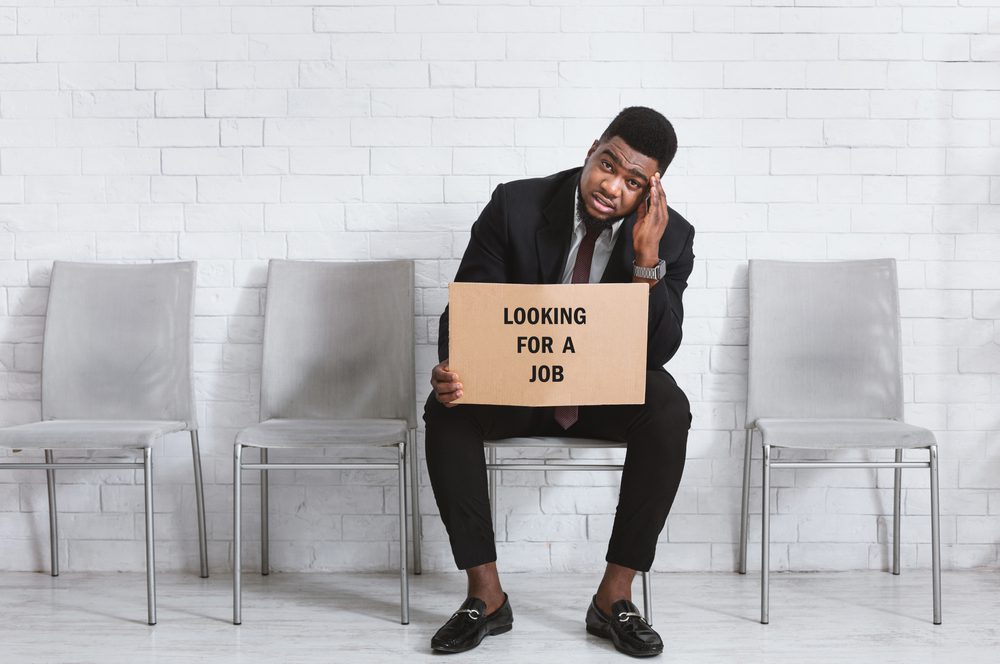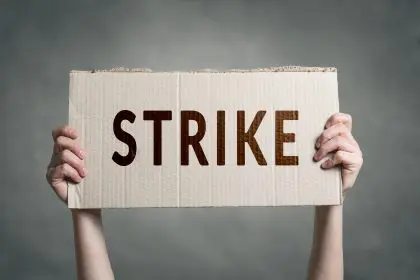San Francisco pulses with ambition, its skyline a testament to innovation and hustle. Yet, in 2025, many workers face grueling realities in jobs that define the city’s rhythm. From dawn shifts to late-night gigs, eight roles—numbered for clarity—stand out for their toll on body, mind, and wallet. High living costs, long hours, and unrelenting demands amplify the strain, reshaping daily life for those who keep the Bay Area moving.
1. Ride-share drivers: Endless roads, tight margins
Ride-share drivers crisscross San Francisco’s hills, ferrying tech workers and tourists through foggy streets. In 2025, the job grows harsher as gas prices hover at $4.50 per gallon, up 7% from 2023, eating into earnings that average $20 hourly after expenses. Traffic, worsened by 10% more vehicles since 2022, stretches shifts to 12 hours for drivers chasing $1,000 weekly goals. High rents—$2,200 for a one-bedroom—force many to live in distant suburbs, adding commute costs.
The grind reshapes life. Meals become gas-station snacks, and family time shrinks to stolen weekends. Drivers maintain cars themselves, saving $200 monthly on repairs but losing sleep. Some join online groups to share fuel-saving routes, while others limit shifts to peak fares. These tweaks, born of necessity, keep wheels turning, reflecting a resolve to outlast the city’s relentless pace.
2. Baristas: Early mornings, steep costs
Baristas fuel San Francisco’s coffee obsession, steaming lattes in Mission District cafes before dawn. Shifts start at 5 a.m., with hourly wages of $18 barely covering basics in a city where a coffee costs $6. In 2025, rising bean prices, up 12% due to global supply snags, pressure shops to cut hours, leaving workers scrambling for tips—often $3 per shift. Rent and transit fares, eating 40% of income, loom large for those earning $35,000 annually.
Days blur into routine. Workers skip breakfast to save $10, and sore feet linger after standing eight hours. Some barter shifts for flexibility, squeezing in side gigs like dog-walking. Others bike to work, dodging $4 bus fares and weaving through fog. Cafe regulars become lifelines, their chats easing the grind. These small acts—bikes parked, tips pooled—sustain baristas in a role that tests stamina but brews community.
3. Construction workers: Heavy loads, high stakes
Construction workers shape San Francisco’s skyline, hammering through dust and noise on downtown high-rises. In 2025, 10-hour shifts at $30 hourly come with risks—falls and injuries rose 15% since 2023 amid rushed projects. Housing costs, averaging 50% of income for families earning $70,000, push many to shared apartments an hour away. Material shortages, tied to 2025’s trade tariffs, delay jobs, leaving paychecks unsteady.
Life bends to the job’s weight. Lunches are quick bites on scaffolds, and weekends vanish to overtime for $500 extra. Workers invest in $200 boots to stay safe, cutting grocery budgets. Some carpool to sites, saving $50 weekly on gas, while others join unions pushing for better hours. These moves—rides shared, dues paid—build solidarity, helping workers shoulder a role that builds the city but breaks backs.
4. Retail clerks: Long days, thin rewards
Retail clerks staff Union Square’s boutiques, folding sweaters and ringing up $200 jackets for $17 hourly. In 2025, foot traffic dips 10% as online shopping grows, slashing commissions that once padded paychecks. Rent, claiming 45% of $40,000 salaries, forces clerks into cramped rentals or long BART rides from Oakland, costing $10 daily. Inventory demands, up with holiday prep, stretch shifts to nine hours without overtime.
The toll mounts quietly. Workers skip doctor visits to save $100, and social plans fade as closing shifts hit 10 p.m. Some juggle second jobs, stocking shelves at night for $300 extra monthly. Others walk to stores, cutting transit costs but adding fatigue. Store potlucks, with clerks sharing dishes, lift spirits. These efforts—steps taken, meals swapped—keep clerks standing, even as the job’s grind wears thin.
5. Hospital orderlies: Relentless care, low pay
Hospital orderlies in San Francisco’s medical centers clean rooms and move patients for $22 hourly, vital but grueling work. In 2025, staff shortages, up 20% since 2023, pile on 12-hour shifts, with mandatory overtime common. Rent and healthcare, consuming 50% of $50,000 incomes, leave little for emergencies. Exposure risks linger, with flu cases spiking 5% this spring, adding stress for workers supporting families.
Life frays under pressure. Meals are vending-machine chips, and kids’ events get missed. Orderlies buy $50 scrubs out of pocket, trimming budgets for school supplies. Some share rides to hospitals, saving $60 monthly, while others attend free wellness classes to cope. Peer support groups, meeting after shifts, ease burnout. These steps—cars pooled, chats held—sustain orderlies, whose care keeps hospitals humming despite the strain.
6. Delivery couriers: Racing clocks, rising costs
Delivery couriers zip through SoMa, dropping groceries and meals for $15 hourly plus tips, often $2 per order. In 2025, bike repairs, averaging $100 monthly, and phone data plans, up 8%, cut into earnings. Traffic fines, with 30% more citations since 2023, hit hard for rushing riders. Studio apartments at $2,500 devour half of $36,000 incomes, pushing many to roommates or hour-long commutes.
Days revolve around speed. Couriers skip breaks to hit 20 deliveries, and wet winters soak gear, costing $80 to replace. Some map shortcuts, shaving minutes, while others join gig forums to swap safety tips. Group rides to depots save $5 daily on transit. These hacks—routes planned, tips shared—fuel couriers, whose hustle feeds the city but tests endurance in a relentless race.
7. Security guards: Long nights, little rest
Security guards patrol Financial District offices, earning $20 hourly for overnight shifts that disrupt sleep. In 2025, demand spikes 12% with new tech campuses, but wages lag rent hikes, with $2,000 studios taking 40% of $45,000 salaries. Physical strain, from standing eight hours, and safety risks, with incidents up 10%, weigh heavy. Overtime, often mandatory, adds $400 monthly but cuts family time.
Life shifts to survive. Guards pack thermoses to save $10 on food, and naps replace hobbies. Some buy $70 flashlights for dark lots, pinching budgets. Carpooling shaves $50 monthly, and online chats share job leads. These choices—meals prepped, rides split—build resilience, letting guards protect the city while guarding their own strength against the job’s demands.
8. Janitors: Invisible work, heavy toll
Janitors scrub tech campuses and hotels for $19 hourly, often at night to dodge daytime crowds. In 2025, cleaning supplies, up 10% with inflation at 3.9%, strain budgets, as do $150 uniforms bought yearly. Rent, eating 45% of $42,000 incomes, forces many into shared flats or San Mateo treks, costing $12 daily on BART. Workloads grow with 15% more office space, piling on six-day weeks.
The job’s weight lingers. Workers skip gym memberships to save $50, and hands ache from scrubbing. Some pool cleaning tools, cutting $20 monthly, while others ride buses at odd hours, saving $5. Breakroom swaps—of recipes or job tips—lift moods. These acts—tools shared, chats savored—keep janitors going, their labor polishing the city while they polish their own grit.
The broader struggle
San Francisco’s job strain ties to 2025’s economic pulse. Housing costs, up 8% since 2023, outpace wages, with median rents hitting $3,200. Inflation lifts prices for gas, food, and gear, squeezing workers earning under $50,000—40% of the city. Tech’s boom, adding 10,000 jobs, fuels growth but widens gaps, leaving service roles underpaid. Benefits, like healthcare, cover just 60% of workers, forcing tough choices between bills and care.
The human cost runs deep. Time for rest, family, or joy shrinks, replaced by commutes and side gigs. Yet, workers adapt—carpools form, apps save cents, and communities share burdens. These eight jobs, though brutal, reveal San Francisco’s heart, where every shift powers the city and every workaround builds hope.
Enduring the grind
These workers don’t just labor—they persevere. Each job, with its aches and trade-offs, shapes San Francisco’s soul, from clean floors to safe streets. In 2025, their resilience shines—routes mapped, meals packed, tips traded. The city’s pulse beats through them, proving that even the toughest days can’t dim a workforce determined to rise, shift after shift.












